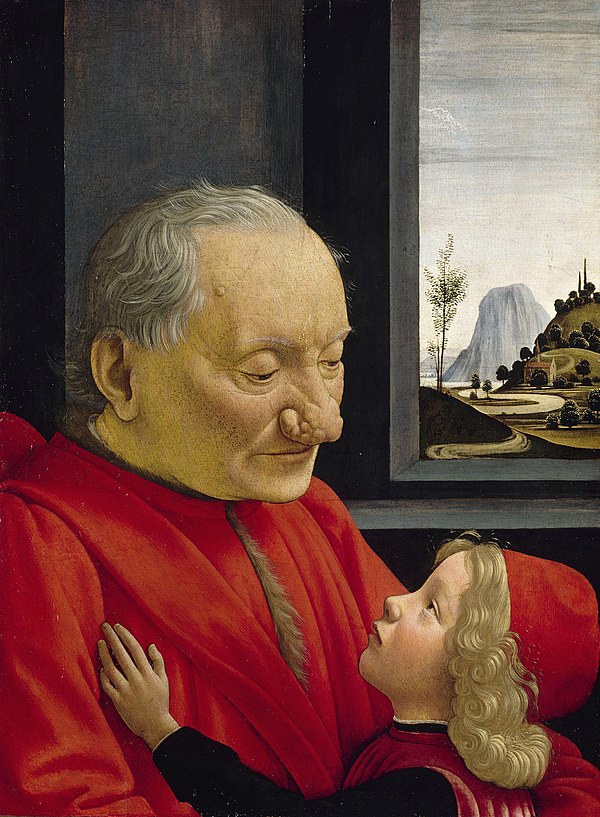149. Why Ugliness in Art?
Umberto Eco, in his book On Ugliness (Rizzoli, 2007), provides a helpful way to categorize our experience of ugliness. There is
(1) Ugliness in itself which gives rise to a visceral, negative reaction. Here we can think of feces, a rotting animal, and so on.
(2) Formal ugliness or “a lack of equilibrium in the organic relationship between the parts of a whole” (19). Here we can think of a room in which has, despite its overall harmony, something which simply doesn’t fit. Typically such formal ugliness doesn’t lead to a visceral negative reaction.
(3) The artistic portrayal of both forms of ugliness through paintings, works of literature, music, and so on.
Now let’s ask: why would we bother with (3), that is, why would we offer artistic portrayals of ugliness? Portrayals of beauty bring us joy, peace, an experience of freedom, and so on. As a result, we always have a good reason to enjoy them. But ugliness? Isn’t there enough ugliness in the world already? Why add more? Here are a few answers that come to mind:
- to capture important yet disturbing truths about the world (e.g., paintings and photos of war).
- to develop a strong sense of drama (e.g., adding dissonance in music that can be resolved).
- to allow for a catharsis (e.g., purging pent up emotions of pity and fear during a tragedy that would otherwise lead to psychological disequilibrium).
- to move us to moral action (e.g., pictures of starving, fly-covered children in need of assistance).
- to help us study something that would be difficult to study if experienced non-aesthetically (e.g., images of a body cut open with its organs visible).
- to induce an experience of fear (e.g., monsters).
These are all worthy of our consideration. But there is one use of ugliness in art that I would like to focus on for a moment, namely,
- to help us “see” someone’s beautiful soul or virtuous character.
Plato, in Book Ten of his Republic, observes that “the calm and wise character in its unvarying constancy is not easy to represent” whereas a vicious character with an erratic temper allows for “a great diversity of dramatic representation.” As we all know, many works of art, especially movies, draw people’s attention with the help of unstable people doing terrible deeds. But it is not so easy to represent the virtuous soul which “is law-abiding” and “prepared to listen to the authority which declares that it is the best to bear misfortune as quietly as possible, without resentment.” To be sure, virtue can be represented by wise and measured speech, acts of courage, emotional restraint, and so on. But what if we are asked to portray virtue without speech and movement like in a painting? It is here that ugliness can help. Consider An Old Man and his Grandson by Domenico Ghirlandaio:
An Old Man and his Grandson (Ritratto di vecchio con nipote), c. 1490, by Domenico Ghirlandaio
Here we see an aesthetic portrayal of both ugliness in itself (the deformed nose) and formal ugliness (the deformity is out of harmony with the other facial features just as the background mountain is out of harmony with other features). But we quickly note that the grandson’s loving gaze looks past the nose into the loving eyes of the grandfather. We sense a silent soul-to-soul connection which allows us to perceive the virtuous souls of both.
In the Republic Socrates observes that the majority of artists present imitations of unjust people which can have a negative effect on people’s character. If people, especially people not particularly virtuous, see viciousness, sex, violence, and stupid humor then they will become more vicious. So these artists are to be censored and even cast out by those who would rule a just state. But, as you can see from the work under consideration, visual art exists that can have a positive effect on us by facilitating a silent perception of virtue. This, I think, is quite an achievement and it is one that is accomplished by using some degree of ugliness to reveal the beauty of virtue.

Feces aren’t ugly, It’s disgusting, When someone draws poop, they are expressing feelings of how disgusting the poop is. or when someone draws a person vomiting, They are also feelings of how disgusting vomit is. a Rotten animal is disgusting rather than ugly. When someone paints a rotten roadkill animal, They are expressing feelings of how disgusting the rotten animal is in the painting. Art is about expressing ideas and feelings/emotions, Art doesn’t have to be beautiful.
Thanks for your comments Amber. I agree that art doesn’t have to be beautiful. And I see your point about reserving the word ‘ugly’ for aesthetic depictions of something which is, rather than ugly, simply disgusting. But this seems a bit arbitrary to me. Oxford Languages Dictionary has one definition of ugliness as “unpleasant or repulsive.” And this seems to capture one meaning of the word ugly. So I like Eco’s three-fold classification which tries to do justice to the variety of ways we use the term. Finally, I would argue that not all art is expressive of ideas, feelings, emotions. The expression theory of art certainly argues that this is what art is definitely about. But imitation theory, formalism, aesthetic cognitivism, and the institutional theory of art all offer competing views worth thinking about. Taken together, they can help us do justice to rich variety of artistic creation and motivation that exist. Just some thoughts.